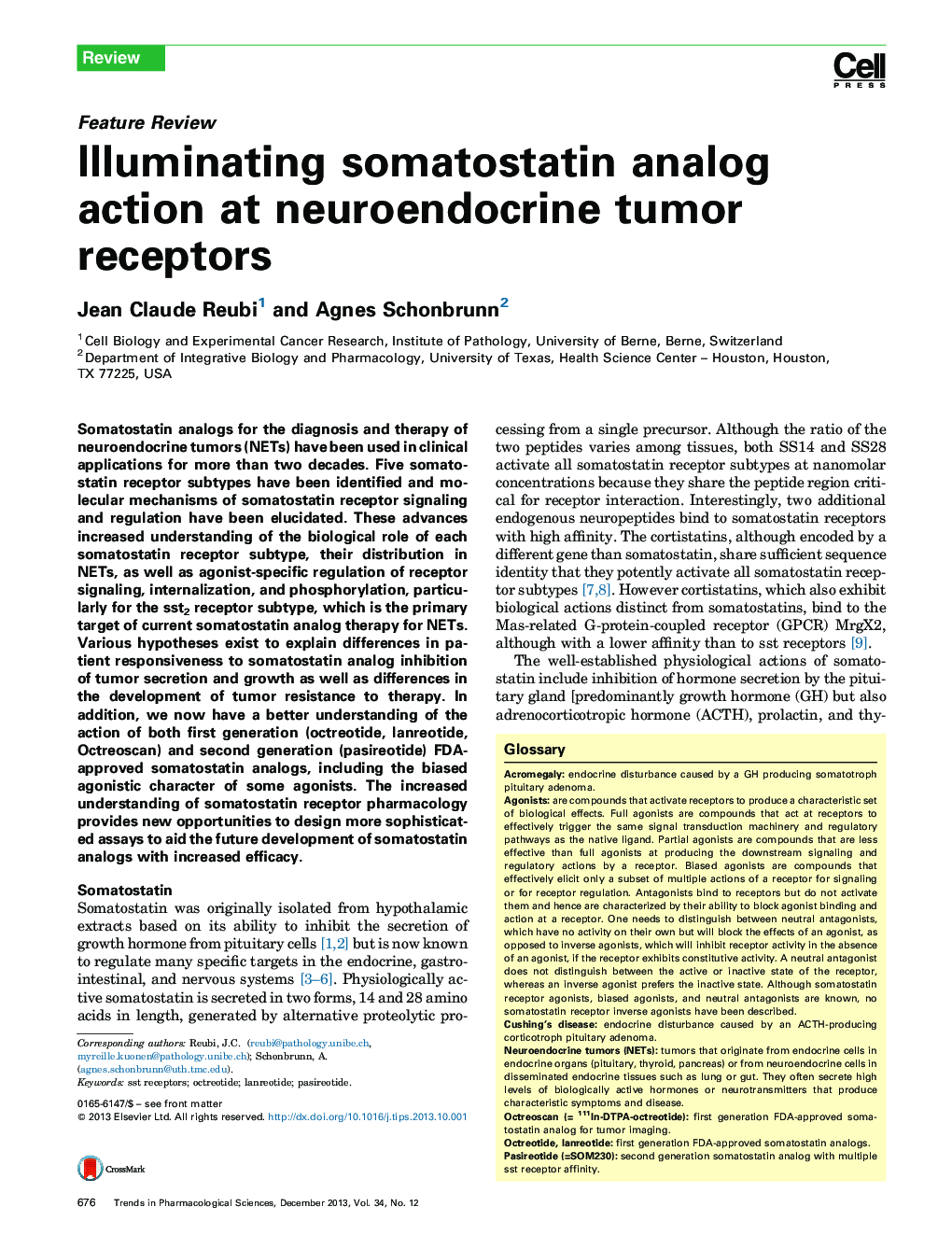| Article ID | Journal | Published Year | Pages | File Type |
|---|---|---|---|---|
| 2572612 | Trends in Pharmacological Sciences | 2013 | 13 Pages |
•Overview of somatostatin receptor signaling.•Role of sst receptor phosphorylation in the mechanisms of sst receptor regulation.•Discussion of somatostatin analogs used for cancer therapy and diagnosis.•Biased agonism at sst receptors: surprises and opportunities.
Somatostatin analogs for the diagnosis and therapy of neuroendocrine tumors (NETs) have been used in clinical applications for more than two decades. Five somatostatin receptor subtypes have been identified and molecular mechanisms of somatostatin receptor signaling and regulation have been elucidated. These advances increased understanding of the biological role of each somatostatin receptor subtype, their distribution in NETs, as well as agonist-specific regulation of receptor signaling, internalization, and phosphorylation, particularly for the sst2 receptor subtype, which is the primary target of current somatostatin analog therapy for NETs. Various hypotheses exist to explain differences in patient responsiveness to somatostatin analog inhibition of tumor secretion and growth as well as differences in the development of tumor resistance to therapy. In addition, we now have a better understanding of the action of both first generation (octreotide, lanreotide, Octreoscan) and second generation (pasireotide) FDA-approved somatostatin analogs, including the biased agonistic character of some agonists. The increased understanding of somatostatin receptor pharmacology provides new opportunities to design more sophisticated assays to aid the future development of somatostatin analogs with increased efficacy.
